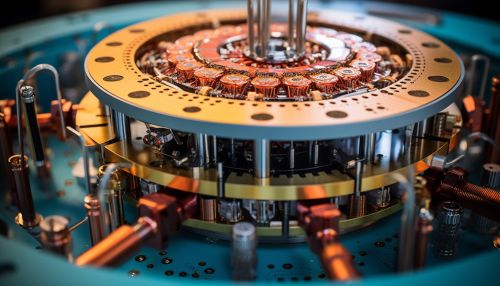Atomic clock
Introduction
An atomic clock is a type of clock that uses the vibrations of atoms to measure time. These clocks are the most accurate timekeeping devices known to man, with some models being able to keep time to within a few billionths of a second over the course of a year. The atomic clock has revolutionized our understanding of time and has led to advancements in numerous fields, including telecommunications, navigation, and space exploration.
History
The concept of an atomic clock was first proposed by Lord Kelvin in 1879, but it wasn't until the mid-20th century that the first practical atomic clock was built. This was accomplished by the National Physical Laboratory in the United Kingdom in 1955, with the first accurate atomic clock being built by the U.S. National Bureau of Standards (now the NIST) in 1957.
Working Principle
The basic principle behind an atomic clock is the use of atomic vibrations to measure time. Atoms vibrate or "tick" at a constant rate, and this rate is used to keep time. The most common type of atomic clock is the cesium atomic clock, which uses the vibrations of cesium atoms to keep time. The cesium atom vibrates at a frequency of 9,192,631,770 times per second, and this frequency is used as the basis for the second in the International System of Units (SI).
Types of Atomic Clocks
There are several types of atomic clocks, each using a different atom to measure time. These include:
Cesium Atomic Clocks
Cesium atomic clocks are the most common type of atomic clock and are used as the primary standard for timekeeping. These clocks use the vibrations of cesium atoms to keep time, with each "tick" of the clock corresponding to a single vibration of a cesium atom.
Rubidium Atomic Clocks
Rubidium atomic clocks use the vibrations of rubidium atoms to keep time. These clocks are less accurate than cesium atomic clocks, but are smaller, cheaper, and more portable, making them ideal for use in field operations and in space.
Hydrogen Maser Clocks
Hydrogen maser clocks use the vibrations of hydrogen atoms to keep time. These clocks are more accurate than cesium atomic clocks, but are larger and more expensive, making them less practical for most applications.
Applications
Atomic clocks have numerous applications in various fields. These include:
Telecommunications
In telecommunications, atomic clocks are used to provide precise timing signals for network synchronization. This is critical for the proper functioning of the network, as even minor timing errors can result in significant data loss.
Atomic clocks are used in navigation systems, such as the Global Positioning System (GPS). The precise timing provided by atomic clocks allows for accurate determination of a user's location.
Space Exploration
In space exploration, atomic clocks are used to provide precise timing for spacecraft navigation and for scientific experiments.
Future Developments
Research is currently underway to develop even more accurate atomic clocks. These next-generation atomic clocks, known as optical atomic clocks, use the vibrations of atoms in the optical (light) frequency range to measure time. These clocks are expected to be several orders of magnitude more accurate than current atomic clocks.


